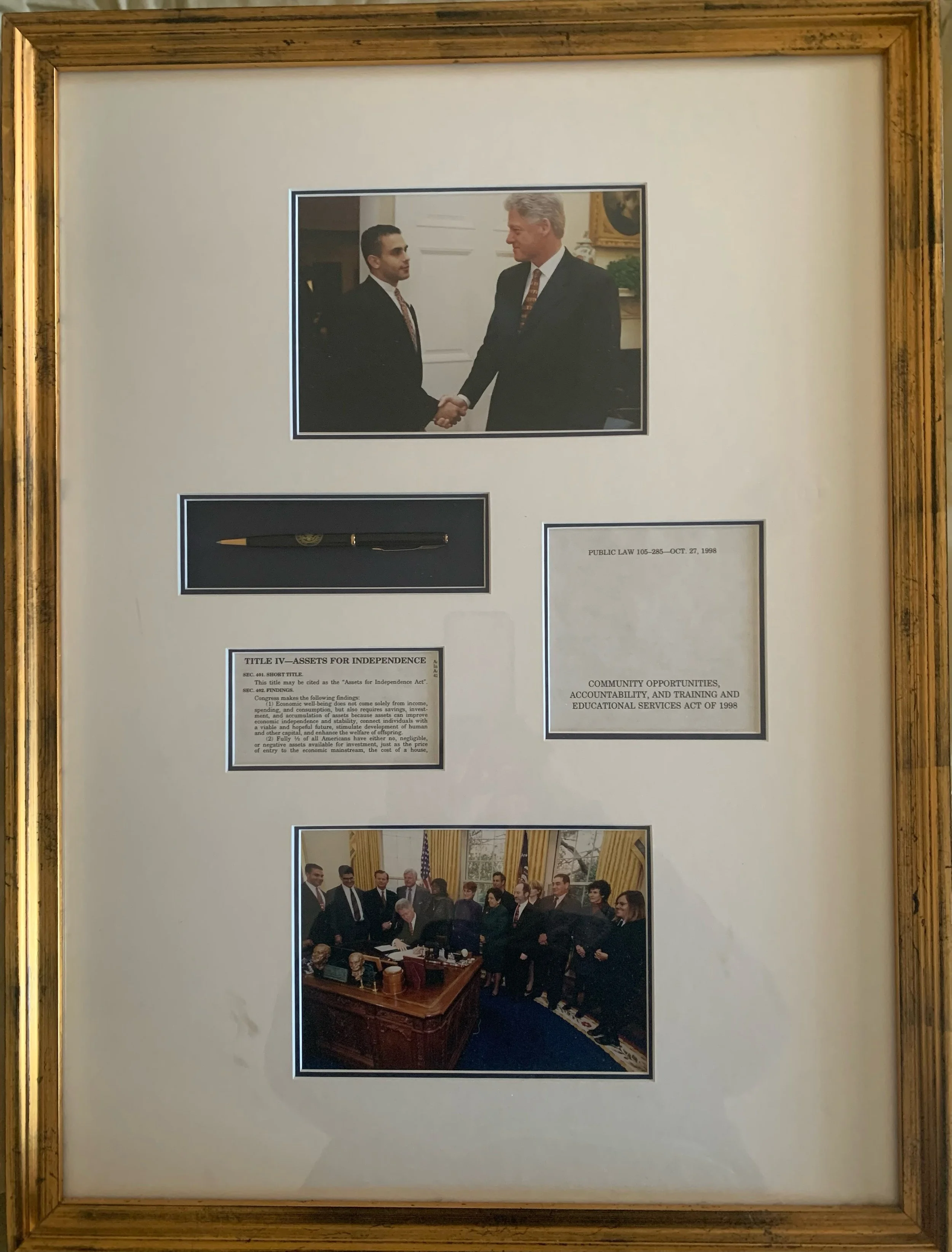StrategY & Operations
Individual Development Accounts
Building a Grassroots Anti-Poverty Movement to Transform Lives
Challenge
Operationalize and popularize a new approach to anti-poverty policy in the United States
Background
Shortly after I graduated from Harvard, I joined the Corporation for Enterprise Development (CFED, now called Prosperity Now), a small, non-profit organization in Washington, DC that develops innovative anti-poverty strategies. The timing was perfect as the organization’s founder and Chair, Robert Friedman, had recently begun work on a new asset-building approach to help poor families climb the economic ladder. The concept, called Individual Development Accounts (IDAs), was modeled after the Post-WWII GI Bill that connected war veterans to the American Dream. Through these restricted savings accounts (matched by public and private sources), poor families could accumulate funds for the downpayment on a home, expenses for education or start-up capital for a small business.
I worked with community organizations to determine how to operationalize IDAs. Thereafter, I used that knowledge to grow the field and impact public policy. When we began our work, there were fewer than a handful of IDA programs.
To spur development of this field, CFED raised funding from several foundations for a national demonstration project to test the efficacy of Individual Development Accounts. I served as director of The American Dream Demonstration project. We selected 13 community-based non-profit organizations around the country to run these programs, and an independent evaluator was hired to share impacts at its conclusion.
My challenge was to work with the 13 community-based programs to structure their programs, discern best practices, and use the insights we gathered to grow the field and influence policy.
Solution
Knowing the wind was at our backs — IDAs were one of few concepts that generated support across the political spectrum, and the current economic outlook for the country was favorable — we needed to move quickly.
While the American Dream Demonstration would be crucial to show the efficacy of IDAs, evaluations take years to publish. We needed to expand activity right away, speed up the learning process, and use that momentum to get state and federal legislation passed.
To do this, I made a strategic decision to open up communications and knowledge. Everything being learned by one program in the Demonstration would be shared. However, to further expedite program growth and learning, the sharing would also include all IDA activity outside the demonstration.
To support innovation, I launched the following:
IDA Learning Network – A first-of-its-kind internet learning network connecting hundreds of practitioners and policymakers to share questions and insights
Annual IDA Conference – The brainchild of CFED founder Bob Friedman, this drew over 500 participants with workshops and trainings around IDA policy and practice
IDA Program Design Handbook – I developed and published several editions of this 300-page how-to-guide with best practices for creating a program that included digital forms and documents
IDA Financial Literacy Curriculum – When credit and other personal finance issues proved a barrier to success, I partnered with the National Endowment of Financial Literacy to create an IDA financial literacy curriculum to serve thousands
AmeriCorps Vista IDA Program – I wrote grant proposals and received funding from the federal government to train, place, and pay over 100 full-time AmeriCorps volunteers to work at IDA programs around the country and share their learnings through the aforementioned tools.
Results
Individual Development Accounts became one of the fastest growing community economic development initiatives of its era.
Within four years, IDAs had grown from fewer than a handful of programs to over three hundred. During that period, over 20 states (now 37) have passed Individual Development Account legislation culminating in the passage and signing by the President of a $100 million federal IDA bill.
Tens of thousands of lives have been transformed by IDAs and subsequent asset-building programs for low-income families.



